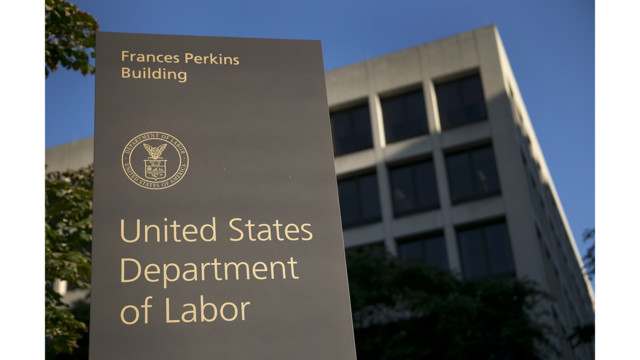How the new AHP rule changes will transform small businesses

With more than half of U.S. workers leaving their current job in search of better pay and benefits, a compelling benefits package is a critical competitive advantage for small businesses. It allows them to stand apart from companies of similar sizes and better stack up against larger ones when competing for candidates or attempting to retain talented staffers. Unfortunately, the historical realities of running a small business and sometimes-burdensome health insurance requirements make those benefits packages all but unattainable for most companies.
That all changed this week. The new DOL change loosens restrictions so that beginning Sept. 1, 2018, small businesses are eligible to band together with others based on industry or geographic affinity to form collectives that can purchase large group health plans. This effectively opens the door for millions of small businesses to offer cost-effective health insurance benefits to millions of American workers.
Known as association health plans, these plans deliver big company benefits with the savings available through group purchasing — typically 10-30%. The move effectively widens the pool of available benefits to employers and employees while reducing administrative overhead for small businesses. The ability to tap AHPs can return the competitive HR advantage to smaller businesses and organizations.
And these businesses are ready to embrace this opportunity. We recently surveyed more than 700 small business and franchisee employers and uncovered strong demand for these benefits, with 84% of respondents expressing a desire to offer their own plans.
As Jack Calabrese from the Napa Insurance Center, a Decisely AHP client with more than 22,000 independent stores, observed: “Offering benefits gives our NAPA owners a competitive edge when trying to hire and hold on to great employees. The NAPA Insurance Center helps our owners offer benefits to their employee at lower rates than the owners could source themselves.”
An AHP can offer tremendous financial and operational benefits for a group of businesses. For example, in only the first 40 days of launching an AHP, one trust membership saved its owner-operators more than $1.5 Million. Additionally, the program realized cost savings of over 20% on medical insurance, averaging over $1,000 per full-time employee.
So, what should small businesses know about these rule changes, including their eligibility and how to effectively prepare for September 1?
The key provisions in DOL ruling include the following:
- The rule expands the definition of “employer” allowing small-business owners, their employees, sole proprietors and other self-employed people to join to buy health insurance plans. The increased bargaining power can lead to lower prices and more cost-effective coverage — this can result in lower premiums for employees.
- The DOL affirmed that “commonality of interest” is still the measurement used to determine eligibility, however that has been expanded to include geography within a state in addition to common business interest (same trade or business)
- An association now can be formed for the sole purpose of offering an association health plan to its members
- As Robert Cresanti, president and CEO of International Franchise Association, noted, “franchise small business owners will be exempt from any possible joint-employer liability that may have come about if they partnered with other franchisees operating under the same brand”.
How to prepare
An AHP or Trust can be sponsored by a group member association and overseen by members of this organization. The job of the AHP is to aggregate and manage member needs to secure coverage on behalf of its members. The AHP often contracts with a broker specializing in small business and program management to create a benefits portfolio for the members, negotiate with insurers on its behalf, and provide program management. The goal is a turnkey solution for the collective sourcing of small business benefits.
An AHP can be set up using three different structures for medical and other benefits:
- Fully Insured Medical: This plan requires no initial capital reserves and does not share risk among the members. Instead, the insurer takes on all risk with little or no financial outlay from the AHP at startup. This is the easiest plan to administer and communicate.
- Self-Funded Medical: This approach requires the AHP to fund some initial capital or financial reserves, meaning it assumes a collective financial risk for providing health care benefits to its members. While insurers prefer this approach, the advantage to the AHP is group-wide savings if the collective group has positive claims experience over time.
- Hybrid Medical: This approach blends risk for all parties and allows dividends or gain sharing for members based on good loss performance. It is sometimes called a Minimum Premium Program.
We’ve found most clients opt for Fully Insured Medical plans. That said, each situation is different, so HR teams should be thoughtful about their choice.
In general, your brokerage team should plan for roughly six months from contracting with a program creator/administrator, through insurer negotiations, to the final launch of any group purchasing plan. This will include formalizing the association’s intended structure, including the formation of an AHP if one does not already exist. A qualified attorney can guide this formation process to ensure proper compliance and governance.
You should also consider sourcing an external program manager to help collect the appropriate data for underwriting AHP members, develop the benefits offering, negotiate with insurers, and implement the technology necessary to enroll small business on a massive scale. Once this plan is finalized, the program administrator can begin activating the strategies, tactics and program management required by AHP member, including call centers, website development, reporting, enrollment technology, and administration.
At this point, your new AHP will be ready for launch for members and employees.
Kevin Dunn
Originally published at Employee Benefits Advisor & Employee Benefit News on June 26, 2018.